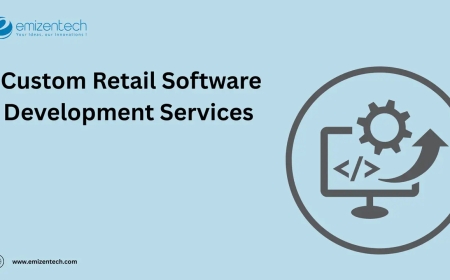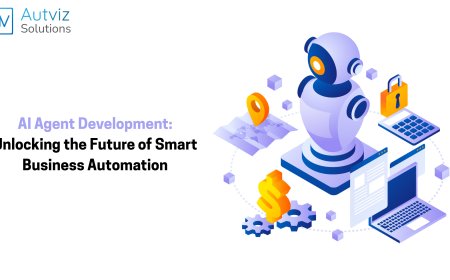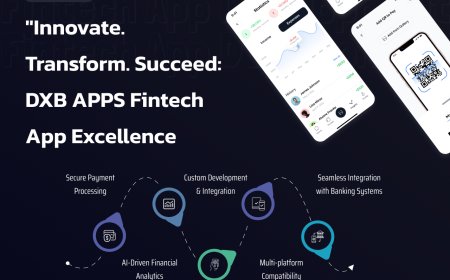Serverless Architecture in Web & Mobile Development
Serverless architecture represents a paradigm shift in how web and mobile applications are developed.

Introduction
The evolution of cloud computing has ushered in transformative shifts in how applications are built, deployed, and maintained. One of the most significant advancements in recent years is serverless architecturea model that allows developers to focus solely on writing code without worrying about managing infrastructure. In the domain of web and mobile development, serverless architecture offers unparalleled scalability, reduced operational complexity, and cost-efficiency.
This article explores the principles of serverless architecture, its benefits and challenges, and how it revolutionizes web and mobile application development.
What is Serverless Architecture?
Despite the name, "serverless" doesnt mean the absence of servers. Instead, it refers to a model where the cloud provider manages the server infrastructure, automatically scaling and maintaining the backend components needed to run applications.
Developers deploy functions or microservices that are triggered by events (e.g., HTTP requests, file uploads, database updates), and the cloud provider handles the provisioning, scaling, and management of resources. Popular serverless platforms include:
-
AWS Lambda
-
Google Cloud Functions
-
Microsoft Azure Functions
-
Cloudflare Workers
-
Netlify Functions
Key Components of Serverless Architecture
Function as a Service (FaaS)
Allows developers to write discrete functions that execute in response to events. Ideal for tasks such as data processing, API requests, and scheduled operations.
Backend as a Service (BaaS)
Provides pre-built backend services like databases, authentication, and storage. Examples include Firebase, Auth0, and AWS Amplify.
Event-Driven Workflows
Serverless applications are typically event-driven, with functions triggered by user actions or system changes.
Auto-Scaling and Load Management
Serverless platforms handle scaling automatically based on demand, ensuring reliability during traffic spikes.
Benefits of Serverless Architecture in Web & Mobile Development
Reduced Operational Overhead
With serverless, developers dont need to manage servers, operating systems, or scaling policies. This frees up time and resources to focus on delivering features and improving user experience.
Scalability
Serverless platforms automatically scale functions based on demand, making it ideal for applications with variable traffic. Whether its a sudden spike or a lull in activity, the architecture adjusts seamlessly.
Faster Time-to-Market
Serverless supports rapid development and deployment. Combined with CI/CD tools, developers can push updates quickly and test them in real-time environments.
Cost Efficiency
You only pay for what you use. Since functions are billed based on execution time and memory usage, there's no cost for idle resources, unlike traditional server-based models.
Improved Developer Productivity
By offloading backend concerns, developers can focus on business logic, user interfaces, and front-end improvements, leading to more innovative applications.
Use Cases in Web & Mobile Development
- Dynamic Web Applications
Serverless is perfect for single-page applications (SPAs) that need fast, scalable APIs and backend logic to handle user interactions.
- Mobile Backend Services
Mobile apps rely on services like authentication, push notifications, and real-time databases. Platforms like Firebase make it easy to integrate serverless backends with minimal effort.
- Chatbots and Virtual Assistants
Using serverless functions, developers can build event-driven bots that interact with users across platforms like WhatsApp, Messenger, or Slack.
- Real-Time Analytics
Serverless functions can process logs, user data, and transactions in real-time, enabling features like dashboards and personalized recommendations.
- Content Management Systems (CMS)
Integrating headless CMS platforms with serverless APIs allows developers to serve content dynamically while ensuring high performance and scalability.
Challenges and Considerations
Despite its advantages, serverless architecture comes with some challenges:
Cold Start Latency
Functions that are not frequently used may experience a delay (cold start) when triggered. This can impact performance for time-sensitive applications.
Vendor Lock-in
Each cloud provider has its own ecosystem and tooling. Migrating from one provider to another can be complex and time-consuming.
Debugging Complexity
Traditional debugging tools may not work as effectively in a serverless environment, especially during asynchronous event handling.
Monitoring and Observability
Since infrastructure is abstracted, tracking down errors, latency issues, or bottlenecks requires robust observability tools.
Best Practices for Implementing Serverless in Web & Mobile Development
-
Design for Event-Driven Logic: Structure your app to respond to discrete triggers.
-
Keep Functions Small and Purposeful: Limit scope to ensure fast execution and maintainability.
-
Use Environment Variables and Secure Secrets: Avoid hardcoding sensitive information.
-
Integrate Monitoring Tools: Use tools like AWS CloudWatch, Datadog, or Sentry to monitor performance and errors.
-
Leverage Managed Services: Take advantage of managed databases, authentication, and storage to reduce development time.
The Future of Serverless
The serverless ecosystem continues to evolve, with innovations like:
-
Edge Computing: Running functions closer to users for ultra-low latency (e.g., Cloudflare Workers).
-
Serverless Containers: Combining the flexibility of containers with serverless benefits (e.g., AWS Fargate).
-
AI Integration: Seamless serverless AI services for image recognition, speech-to-text, and natural language processing.
As tooling improves and adoption increases, serverless is poised to become a foundational component of modern application stacks.
Conclusion
Serverless architecture represents a paradigm shift in how web and mobile applications are developed. By abstracting away the complexities of infrastructure management, it empowers developers to innovate faster, scale effortlessly, and reduce operational costs. While there are challenges to address, the benefits are compelling for businesses looking to stay agile and competitive in todays digital landscape.
Whether you're building a small mobile app or a large-scale web platform, serverless is a game-changing approach worth considering in your development toolkit.






































